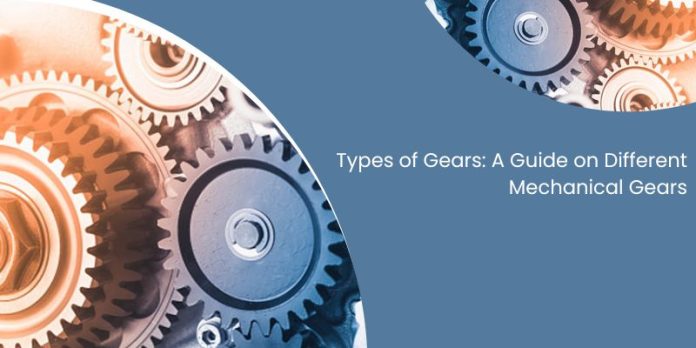Gears are integral components of many machines and mechanical devices. They are used to transmit rotational force to change the speed, direction, or position of a power source. The different types of gear have their own unique designs, functions, and benefits.
This guide provides an overview of several common types of mechanical gears and their uses.
1. Spur Gears
Spur gears are the simplest and most common type of gear. Their teeth are straight and parallel to the gear’s axis of rotation. Spur gears can efficiently transmit power between parallel shafts. They are used in low-speed applications and are useful when noise reduction is not a priority. Due to their simple design, spur gears are inexpensive to manufacture. They can be found in clocks, washing machines, drills, and more.
Also Read About – A Tracker for Car and Assets Monitoring
2. Helical Gears
Helical gears have teeth that are set at an angle to the gear’s axis of rotation. This angled design allows the teeth to smoothly engage with each other, leading to quieter and smoother operation compared to spur gears. The angle of the gear teeth also increases their surface area allowing for greater power transmission between shafts. Helical gears minimize vibrations and can operate at high speeds. Drawbacks include being more expensive to produce than spur gears. They have applications in car transmissions, construction equipment, and industrial machinery.
3. Worm Gears
Worm gears consist of a worm screw meshing with a worm wheel. The worm screw resembles a threaded rod that meshes with the worm wheel like a pinion gear. This can provide a high gear reduction in a relatively small space. Worm gears are self-locking, meaning the worm wheel cannot spin the worm screw. This makes them ideal for applications that require high precision like adjusting equipment. Worm gears are found in machine tools, conveyors, rudders, and electric screwdrivers.
4. Rack and Pinion
The rack and pinion gear converts the rotational motion of a pinion gear into linear motion. The pinion gear is paired with a flat, toothed bar called a rack. As the pinion spins, its teeth drive the rack in a linear direction. Rack and pinion systems are often used in steering systems, CNC machines, elevators, band saws, and more. The simply constructed rack and pinion provide direct motion with high precision.
Read More – Start Your Own Truck Driving Business with Easy Steps
5. Planetary Gears
Planetary gear systems consist of one or more outer gears (planet gears) revolving around a central sun gear. An outer ring gear surrounds the planet’s gears and meshes with them. Planetary gears can provide extremely high gear reduction ratios while being more compact than other types. Having multiple planet gears increases load capacity. Planetary gear systems are ideal for applications requiring high torque like construction equipment, automotive differentials, machine tools, and turbine engines.
6. Bevel Gears
Bevel gears, also known as miter gears, have conically shaped teeth cut at an angle. This allows power transmission between intersecting shafts that are at 90 degrees to each other. The teeth mesh at the apex of the cone, where the axes of the two shafts intersect. This makes them very useful for changing the direction of a mechanical drive. Bevel gears are utilized in differential drives on vehicles, helicopter rotor drives, surveying instruments, and more.
7. Non-Circular Gears
In most gear systems, the gears are circular with teeth cut in a cylindrical or conical shape. Non-circular gears adopt different geometry like triangular, elliptical, oval, or other shapes. The specialty tooth profile enables changing mechanical advantages as the gears rotate. Non-circular gears have uses in unusual mechanisms, variable speed drives, and other special motion control applications.
Materials and Manufacturing
Gears are commonly machined from metal alloys, including steel, aluminum, brass, and bronze. Plastics like nylon, acetal, and polycarbonate are used for light-duty and low-cost gears. Materials are chosen based on factors like desired strength, weight, corrosion resistance, noise, and cost. Gears can be manufactured through various processes including hobbing, casting, powder metallurgy, plastic injection molding, and machining.
Lubrication and Maintenance
Proper lubrication and routine maintenance are critical for gears to operate smoothly and efficiently. Gear oil or grease helps minimize friction and wear of the gear teeth. It also dissipates heat and prevents corrosion. The lubricant should be selected based on the gear type, load, rotational speed, and desired service intervals. Synthetic oils offer better performance. The lubricant should be periodically changed to prevent buildup of metal particles that can accelerate wear.
In summary, there is a diverse range of mechanical gear types that all serve various functions depending on the application. Understanding the unique benefits of each enables selecting the right gear type for the job. Proper installation and maintenance are also essential for gears to function optimally.
